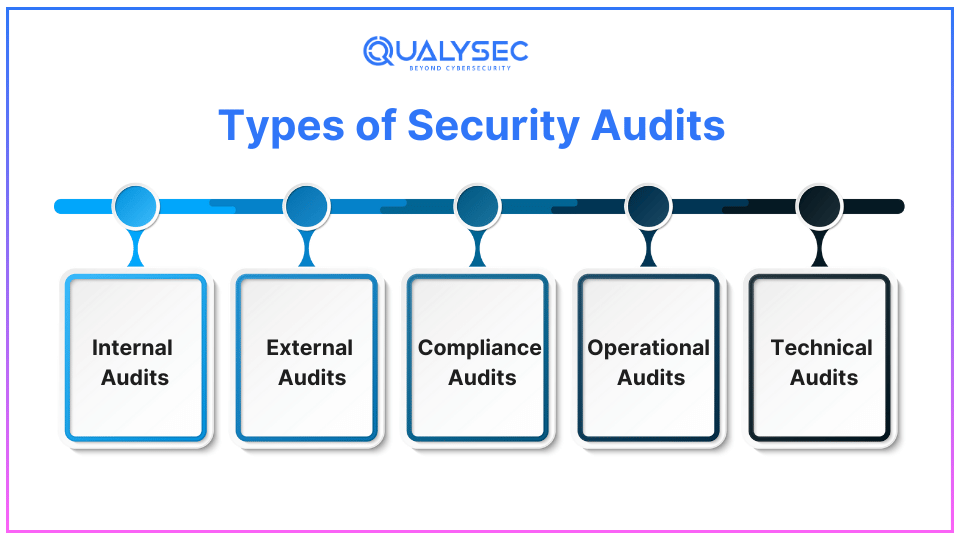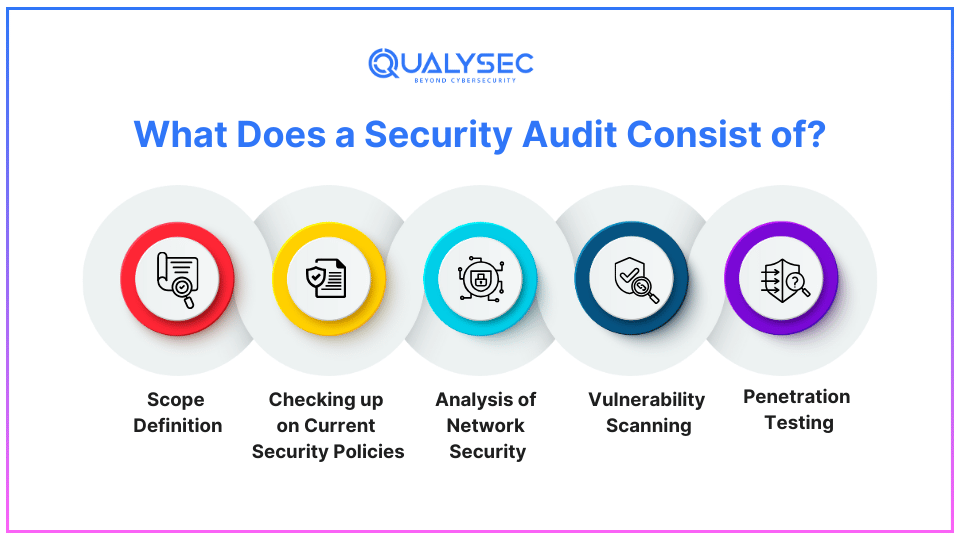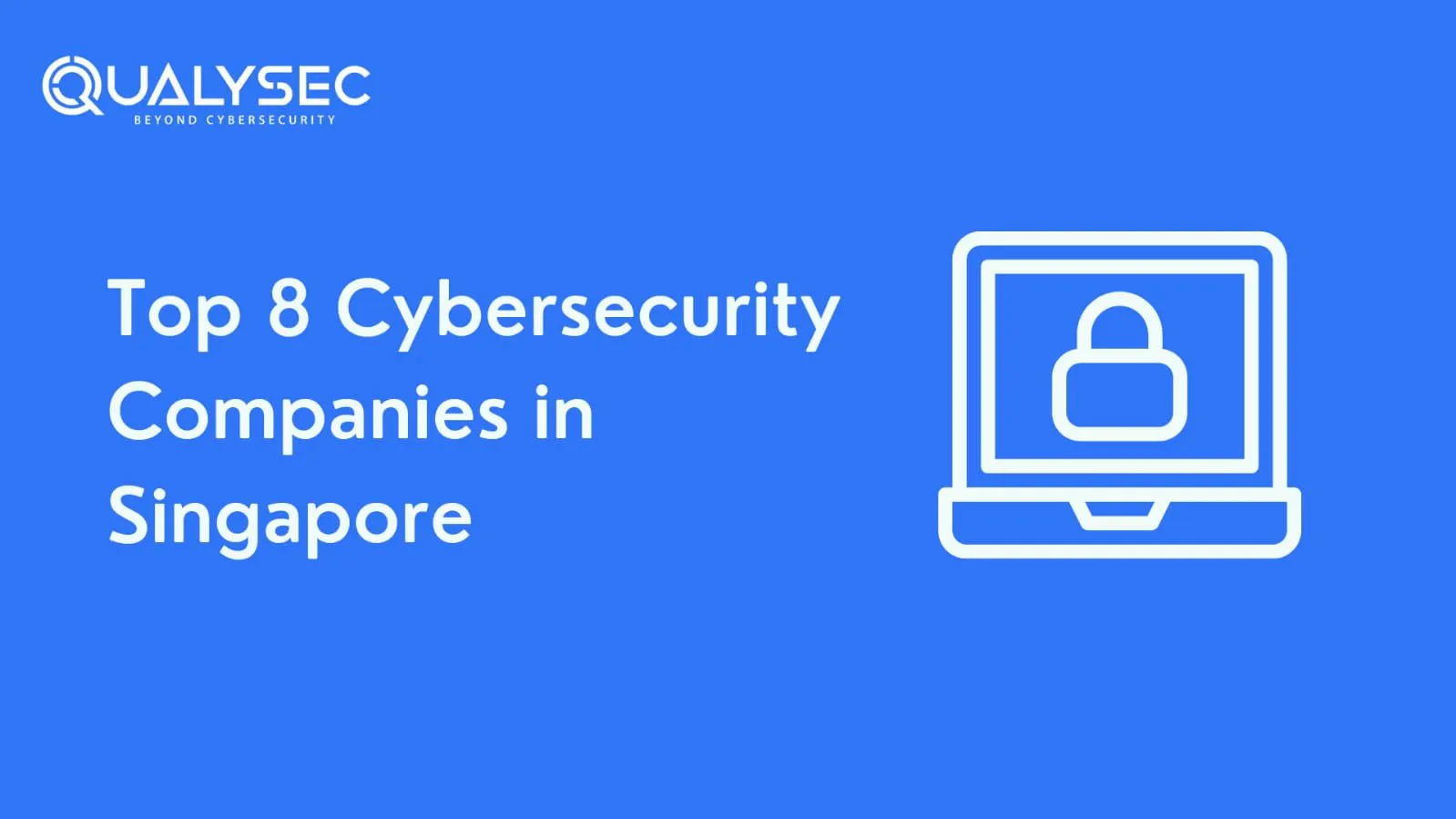Cybersecurity is a top priority for businesses of all kinds in the current digital era. The necessity for strong security measures is now more critical than ever as cyber-attacks become more sophisticated (According to recent reports, the global cost of cybercrime will reach $9.4 million in 2024).
Regular security audits are among the best strategies for guaranteeing the safety of an organization’s information systems.
Hence, this blog will explore security audit definitions, significance, types, and procedures. Along with offering guidance on how to perform security audits, how often to conduct them, and a comprehensive security audit checklist. Additionally, it will also discuss the distinctions between vulnerability assessments, penetration tests, and security audits.
What Is a Security Audit?
A security audit thoroughly assesses how effectively an information system aligns with pre-established criteria, determining the system’s security for an organization. This comprehensive evaluation encompasses information processing procedures, software, hardware, and user practices. Additionally, security audits are necessary to comply with various industry regulations such as:
Moreover, the primary objective is to identify potential vulnerabilities that malicious actors could exploit, ensuring that security controls comply with relevant laws and regulations.
How Does a Security Audit Work?
During a security audit, auditors closely examine an organization’s information systems, policies, and procedures to detect flaws and assure compliance with security regulations. The process involves careful planning, identification of critical assets, and risk evaluation. Auditors review data protection protocols, access restrictions, and system configurations. They also conduct vulnerability assessments and penetration tests to uncover vulnerabilities.
The findings are documented in a report that pinpoints weak areas and proposes remedial actions. Post-audit verification is done to ensure the implementation of corrective measures. Therefore, this comprehensive procedure is crucial in fortifying the organization’s systems and data against security risks, unauthorized access, and data breaches.
Importance of Security Audits
Security audits are essential for several reasons:
- Risk Management: It prevents the loss of essential data and the leakage of confidential information to unauthorized persons.
- Regulatory Compliance: Most significantly, it maintains that the organization meets all legal requirements, including data protection laws and regulations like GDPR, healthcare standards like HIPAA, and payment security standards like PCI DSS.
- Reputation Protection: It minimizes fraud risks and other security attacks that may undermine the company’s credibility in the market.
- Operational Efficiency: Increasing the security level of an organization can, in turn, positively impact its current and future performance.
- Stakeholder Confidence: Another essential reason is to guarantee the stakeholders, customers, and partners that the organization values security.
Types of Security Audits

There are several sorts of security audits, each with different goals.
1. Internal Audits:
The organization’s staff carries out an audit to assess the internal control mechanisms and procedures.
2. External Audits:
A certified third-party assessment team conducts security audits or penetration testing to give an impartial opinion about the organization’s security status.
3. Compliance Audits:
The goal of a security compliance audit is to identify areas where the organization’s compliance is lacking and ensure it complies with regulatory standards.
4. Operational Audits:
Assess the adequacy and efficacy of security measures in operations.
5. Technical Audits:
Includes detailed examination of technical issues relating to the organization’s information systems, including network, application, and database security.
Security Audits VS. Penetration Testing and Vulnerability Assessments
Although vulnerability assessments, penetration testing, and security audits are all essential elements of a thorough security plan, their functions differ:
| Vulnerability Assessments | Penetration Testing | Security Audit |
| Systems are scanned for known vulnerabilities as part of vulnerability assessments. Vulnerability assessments detect, classify, and identify vulnerabilities without necessarily attacking them, unlike penetration testing, which actively exploits weaknesses. Hence, organizations can identify known dangers to which they are exposed and prioritize maintenance activities using this procedure. |
The goal of penetration testing is to find vulnerable areas through targeted assault simulation. Although it is frequently carried out as an independent evaluation, it can also be a part of a more extensive security audit. Pen testers offer an insider’s view of how an attacker might compromise a system by employing various tools and tactics to get prior safety precautions. |
In addition to reviewing policies, procedures, and standard compliance, a security audit includes vulnerability assessments and penetration testing. It offers a comprehensive perspective of an organization’s security posture to ensure that each security component is covered. |
What Does a Security Audit Consist of?
A security audit thoroughly examines an organization’s information system to ensure it adheres to security regulations and preserves data availability, confidentiality, and integrity. Hence, it typically consists of the following basic elements:

1. Scope Definition
A security audit can be defined as the initial stage of the process that includes determining the systems, applications, or networks to be investigated. Therefore, this means defining essential assets, data kinds, and risks to prioritize what kind of audit is necessary and where there is the most danger.
2. Checking up on Current Security Policies
To check the balance and relevance, auditors also look at the existing policies on security. Evaluate policies and processes for access control, data protection, and overall regulatory compliance to determine whether risk mitigation is effective.
3. Vulnerability Scanning
Software programs perform network and system scans to look for security gaps. This process reveals threats like insecure software, improper configurations, and unpatched systems, which may invite attackers.
4. Penetration Testing
Penetration testing emulates real-life attacks to evaluate the efficiency of applied security measures and reveal the other vulnerabilities that could remain unnoticed. this method uses both automated tools and manual testing methods to discover maximum security vulnerabilities in the system.
5. Analysis of Network Security
This step includes studying the structural design and specifications of networks. Auditors analyze the specifics of the firewall and other security products and check encryption and other methods to prevent intrusion from the outside and internal threats.
Why Do Companies Need Security Audit?
Companies need security audits for several compelling reasons:
| Protecting Sensitive Information | Protecting the privacy, accuracy, and accessibility of sensitive data. |
| Regulatory Compliance | To ensure that legal penalties are avoided and that industries adhere to the standards and legal requirements set out by the law. |
| Preventing Data Breaches | Preventing loopholes that the attacker can exploit to their advantage. |
| Enhancing Trust | Securing consumer, business, and stakeholder relationships by proving that security is a corporate priority. |
Have you conducted a security audit for your company recently? Do not fear; get in touch with us to receive cybersecurity audit services right away!
Talk to our Cybersecurity Expert to discuss your specific needs and how we can help your business.
How Do You Perform a Security Audit?

Conducting a security audit involves multiple steps, whether it’s a data security audit, cybersecurity audit, IT security audit, SOC 2 audit, ISO 27001 audit, or network security audit.
1. Gathering Information
The first phase in the audit process is to actively acquire a large amount of information using data collection methods. This encompasses architectural diagrams, network designs, and current security solutions. Moreover, it is critical to map user roles and permissions and determine information flows to design an adequate audit plan encompassing technical and functional areas.
2. Planning
In the Planning phase, auditors set aims and objectives that are specific and realistic concerning the complexity of the application. This entails preparing a clear and precise audit plan that indicates the audit’s scope, methodology, and criteria, preparing all necessary working papers and tools, and setting up the testing environment for the audit to achieve the most efficient and effective audit.
3. Auto Tool Scan
In a controlled environment, the tool scans to find easily exploitable vulnerabilities. Specialized security audit tools can mimic a potential attack and traverse the application to find vulnerabilities. Thus, this is advantageous since it avoids security issues affecting critical systems and data before fully deploying.
4. Manual Testing
Manual testing is performed to detect risks that automatic tools cannot find. These are injection testing, server site review, input validation, file testing, and encryption testing. This method improves system security by carefully examining all elements.
5. Reporting
Auditors then document each of the findings in a report. Thus, these reports provide the developers with more specific data on the system’s security situation and tangible advice on improving the existing security measures.
Are you curious about the structure of a security audit report? To download one, click the link below!
Latest Penetration Testing Report

6. Remediation Support
After the audit, the auditors spend significant time explaining to the development team how to reproduce an issue and prevent similar problems from reoccurring. This coordination helps effectively address security challenges and strengthens security by leveraging professional assistance.
7. Retesting
After remediation, auditors conduct extensive retesting to ensure the issues are corrected effectively. The final report outlines the findings’ history, the assessments’ current status, and the evidence that supports the report. This stage ensures that the team adequately addresses all vulnerabilities, showing that the system is appropriately protected.
8. LOA and Certificate
The audit process is finalized by issuing a Letter of Attestation (LOA) and a certificate. This assures stakeholders of the security level attained, compliance with the standards, and the efficiency of measures instituted by auditors in the security testing or audit process.
How Often Should Security Audits Be Performed?
A company should undertake security audits at least once a year to ensure its security policies are effective. However, more frequent audits—quarterly or semi-annually—are advised for high-risk environments or firms managing sensitive data. Furthermore, audits must be carried out after mergers, system upgrades, and security breaches, among other significant events.
Frequent audits support a proactive security posture, assist in finding weaknesses, and guarantee regulatory compliance. Therefore, the frequency must be customized to the organization’s unique demands and risk profile to maintain strong security defenses.
Security Audit Checklist
A security audit checklist ensures that it covers all critical areas during the assessment. Here’s a sample of a checklist:
1. Policy and Procedure Review:
An organization must document and update security policies and standard operating procedures. Employees should review these policies occasionally to check compliance and preparedness.
2. Access Control:
To avoid external attacks, strict access control measures must be implemented for all the systems. It is vital to check and monitor user accounts often to ensure that those granted access privileges have their accounts up to date. Multi-factor authentication of passwords increases security since users must provide additional authentication details.
3. Network Security:
Use intrusion detection/prevention systems and firewalls to secure the perimeters of your networks. Segments should also be configured to reduce contact with unauthorized users and aid in limiting breaches. Therefore, constant scanning of the networks to identify any malicious activities is very important as this will help protect the networks in case of any malicious activities.
4. Data Protection:
Data encryption is an essential best practice to secure data in transit and at rest. Protecting data through adequate backup systems provides an effective way of restoring lost data if the need arises. Therefore, the data retention policy guarantees that the company properly manages data throughout its lifecycle while complying with legal requirements.
Conclusion
Security audits are crucial to guarantee the security, accessibility, and reliability of a company’s information assets and systems. Audits assist firms in proactive risk mitigation and potential security breach prevention by detecting vulnerabilities and gaps in the security infrastructure. Furthermore, security audits are essential for guaranteeing adherence to industry standards and legal obligations. Thus, to defend against constantly changing cyber threats, businesses must prioritize conducting frequent security audits as part of their overall security plan.
FAQs
Q. What do you mean by security audit?
A. A security audit systematically assesses an organization’s information systems, policies, and procedures to detect vulnerabilities, guarantee regulatory compliance, and improve overall security posture, thereby defending against potential threats and data breaches.
Q. Who does security audits?
A. Internal security teams, third-party security companies, and specialized auditors carry out security audits. These specialists assess systems, networks, and procedures to discover vulnerabilities, verify regulatory compliance, and recommend improved security practices.
Q: What is the role of a security auditor?
A: Security auditors carry out audits based on industry regulations and government policies. They help identify security risks and vulnerabilities in an IT system and work closely with developers to mitigate them. Additionally, they help the company comply with necessary industry standards.































































































































































































































































































































0 Comments